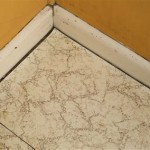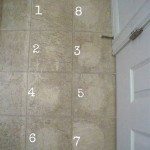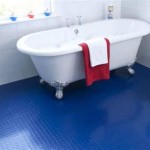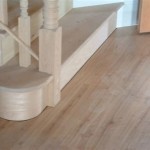Steel Grid Mesh Flooring: Properties, Applications, and Benefits
Steel grid mesh flooring, also known as steel bar grating, is a robust and versatile flooring solution widely used in industrial, commercial, and architectural applications. It is constructed by welding or pressure-fitting load-bearing bars with crossbars, forming a grid-like structure that offers a high strength-to-weight ratio, excellent ventilation, and slip resistance. The selection of appropriate steel grid mesh flooring requires a thorough understanding of its material properties, available types, manufacturing processes, installation methods, and adherence to relevant industry standards.
This article provides a comprehensive overview of steel grid mesh flooring, encompassing its characteristics, common applications, key advantages, and factors to consider during the selection and implementation process. The information presented is intended to assist engineers, architects, contractors, and facility managers in making informed decisions regarding the use of steel grid mesh flooring in various projects.
Material Composition and Manufacturing
The primary material used in steel grid mesh flooring is typically carbon steel, although stainless steel and aluminum are also utilized for specific applications requiring enhanced corrosion resistance or lighter weight, respectively. Carbon steel provides a cost-effective option with sufficient strength and durability for many industrial settings. Common grades include A36 steel, known for its weldability and ductility. Stainless steel, such as 304 or 316, offers superior resistance to corrosion from chemicals, moisture, and extreme temperatures, making it suitable for food processing plants, marine environments, and other demanding applications. Aluminum is chosen when weight reduction is a critical factor, such as in offshore platforms or aerospace facilities.
The manufacturing process typically involves two primary methods: welding and pressure-locking. Welded steel grid mesh flooring is created by resistance welding the load-bearing bars to the crossbars at each intersection. This process creates a strong and permanent bond, resulting in a rigid and durable structure. Pressure-locked steel grid mesh flooring, on the other hand, utilizes hydraulic pressure to force the crossbars into notched load-bearing bars. This method offers a visually appealing, flush surface and is often preferred for architectural applications. Both methods result in a grid pattern with defined openings that allow for the passage of light, air, and fluids.
The size and spacing of the load-bearing bars and crossbars are crucial design parameters that influence the load-bearing capacity and structural integrity of the flooring. Closer spacing between load-bearing bars increases the load-bearing capacity but also increases the overall weight and cost. The size and shape of the bars also contribute to the overall structural performance.
Common Applications of Steel Grid Mesh Flooring
Steel grid mesh flooring finds extensive application across a wide range of industries and environments due to its durability, versatility, and safety features. Understanding these applications can help identify the specific needs and requirements of a particular project.
In industrial settings, steel grid mesh flooring is commonly used for walkways, platforms, mezzanines, and stair treads. Its open grid design allows for easy drainage of liquids and debris, preventing the accumulation of hazardous materials and promoting a safer working environment. The high strength-to-weight ratio enables the flooring to withstand heavy loads and frequent traffic from equipment and personnel. Chemical plants, refineries, and manufacturing facilities often utilize steel grid mesh flooring due to its resistance to corrosive substances and its ability to provide a secure footing.
Commercial and architectural applications include pedestrian walkways, building facades, sunshades, and security screens. The aesthetic appeal of pressure-locked steel grid mesh flooring makes it a popular choice for architectural designs. Its open design allows for natural light to penetrate, creating visually appealing spaces. In security applications, steel grid mesh flooring can be used to create barriers that prevent unauthorized access while maintaining visibility.
Transportation infrastructure applications include bridge decks, railway platforms, and subway stations. The durability and weather resistance of steel grid mesh flooring make it suitable for these demanding environments. Its open design allows for snow and ice to fall through, reducing the risk of slips and falls. The flooring can also be designed to withstand the dynamic loads imposed by vehicles and pedestrians.
Wastewater treatment plants also commonly employ steel grid mesh flooring because of its anti-corrosive properties, especially if constructed of stainless steel. It allows for easy cleaning and prevents the accumulation of debris, contributing to a cleaner and healthier working environment.
Key Advantages of Steel Grid Mesh Flooring
Steel grid mesh flooring offers several significant advantages over other flooring materials, making it a preferred choice in many applications. These benefits stem from its unique structural properties, manufacturing processes, and material characteristics.
One of the primary advantages is its high strength-to-weight ratio. The grid design allows for efficient distribution of loads, enabling the flooring to support heavy weights while minimizing material usage. This reduces the overall cost and weight of the structure, making it easier to install and transport. The strength is highly dependent on design parameters like load bar size, shape, and spacing. Furthermore, the welding process used in manufacturing creates a strong and rigid structure that can withstand significant impact and vibration.
Another key benefit is its excellent drainage and ventilation properties. The open grid design allows liquids, debris, and air to pass through freely, preventing the accumulation of contaminants and promoting a cleaner and safer environment. This is particularly important in industrial settings where spills and debris are common. The ventilation also helps to reduce the build-up of moisture and humidity, preventing corrosion and mold growth.
Slip resistance is another critical advantage of steel grid mesh flooring. The textured surface provides a secure footing, even in wet or oily conditions. This reduces the risk of slips and falls, enhancing workplace safety. Some manufacturers also offer grating with serrated surfaces to increase slip resistance further.
The durability and low maintenance requirements of steel grid mesh flooring are also significant advantages. Steel is a robust material that can withstand harsh environments and heavy use. The flooring requires minimal maintenance, typically only periodic cleaning to remove debris and prevent corrosion. The long service life of steel grid mesh flooring reduces the overall cost of ownership compared to other flooring materials that may require frequent repairs or replacements.
Installation of steel grid mesh flooring is relatively straightforward, especially when compared to poured concrete or other complex flooring systems. The flooring can be easily cut and shaped to fit specific requirements. It can be installed using a variety of methods, including welding, bolting, or clipping, depending on the application and the desired level of security. The modular design of steel grid mesh flooring allows for easy removal and replacement of individual sections, facilitating maintenance and repairs.
Finally, steel grid mesh flooring is a sustainable and environmentally friendly choice. Steel is a recyclable material, and the manufacturing process generates minimal waste. The long service life of steel grid mesh flooring reduces the need for frequent replacements, further minimizing its environmental impact. Using recycled steel contributes to a lower carbon footprint and promotes resource conservation.
Selecting the correct type of steel is critical for specific environments. While carbon steel is generally an excellent choice for indoor environments, stainless steel (specifically 316) should be considered for highly corrosive environments. Galvanizing carbon steel is also an option for enhancing corrosion resistance.
Proper installation is also important. Welding should only be carried out by certified welders in accordance with industry best practices and standards. Regular inspections of the flooring should be carried out to quickly identify and rectify any potential damage to prevent accidents.
The selection of the proper load-bearing capacity is also of extreme importance. Overestimation of the load-bearing capacity can lead to an increased cost while underestimation can cause potential failure. Detailed calculations, in compliance with industry standards, must be carried out before implementation.

Floor Mesh Steel Grating Welded Supply From China

Flooring Mesh Grating Galvanized Steel Floor From China

Mild Steel Open Flooring Galvanised Or Coloured Metal Supplies

Welded Steel Wire Mesh Grating Bar Floor China Lattice Plate Made In Com

Walk This Way For Mesh Flooring

Steel Grating Floor Panels For Platform Walkway And Ditch

Floor Forge Walkway Steel Galvanised Grating Multi Variations All Sizes

Drainage Grating Floor Drain Galvanized Steel China Hot Dip Made In Com

Galvanised Steel Foot Grate Rustproof Net World Sports

Steel Grate Floor Galvanized Bar Grating For Holemetals Com
Related Posts








